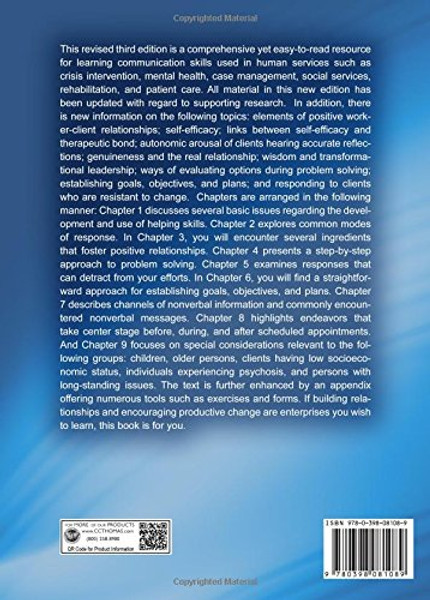Product Overview
This revised third edition is a comprehensive yet easy-to-read resource for learning communication skills used in human services such as crisis intervention, mental health, case management, social services, rehabilitation, and patient care. All material in this new edition has been updated with regard to supporting research. In addition, there is new information on the following topics: elements of positive worker-client relationships; self-efficacy; links between self-efficacy and therapeutic bond; autonomic arousal of clients hearing accurate reflections; genuineness and the real relationship; wisdom and transformational leadership; ways of evaluating options during problem solving; establishing goals, objectives, and plans; and responding to clients who are resistant to change. Chapters are arranged in the following manner: Chapter 1 discusses several basic issues regarding the development and use of helping skills. Chapter 2 explores common modes of response. In Chapter 3, you will encounter several ingredients that foster positive relationships. Chapter 4 presents a step-by-step approach to problem solving. Chapter 5 examines responses that can detract from your efforts. In Chapter 6, you will find a straightforward approach for establishing goals, objectives, and plans. Chapter 7 describes channels of nonverbal information and commonly encountered nonverbal messages. Chapter 8 highlights endeavors that take center stage before, during, and after scheduled appointments. And Chapter 9 focuses on special considerations relevant to the following groups: children, older persons, clients having low socioeconomic status, individuals experiencing psychosis, and persons with long-standing issues. The text is further enhanced by an appendix offering numerous tools such as exercises and forms. If building relationships and encouraging productive change are enterprises you wish to learn, this book is for you.








